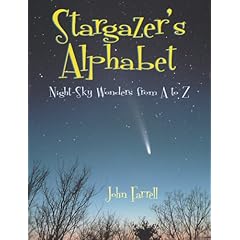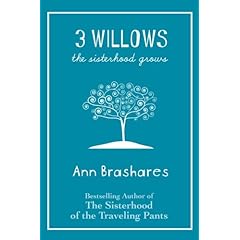I should be getting ready for tomorrow's homeschooling day--photocopying math pages, printing out spelling sheets, deciding which Egyptian activities to attempt (where does one buy natron, anyway?), but, since I recently sat down and went through the stack of astronomy books I got from the library with the intent of seeing what would work for our spring study of the stars and planets, I thought I'd upload my thoughts before they disappear into the ether. Can you tell my memory is failing as I approach forty? ☺

One book I thought I might use is
Galileo for Kids, part of a long list of resources from Chicago Review Press that has Lewis & Clark, Darwin, and other historical figures or events as the basis for activity books. Kind of "
Williamson Kids Can" for the logic stage, I inferred from reading the synopsis. I think I will use it, but later, when we hit the Renaissance (Spring or Fall 2010 if all goes according to plan, which it never does) again in our history studies, especially if DS (now almost 11) is still interested in astronomy then. The information contained within the text, and there is a lot of it, contains loads of history. Some of the activities are history-based, as well, but the bulk of them are science- and/or math-oriented, with historical side-notes. There are twenty-five of them! It seems extremely through, and, (dare I say it?) slightly reminded me of a textbook, albeit a well-written, singly-authored one. The age range on the book states ages nine and up, but I'd push it higher (12 and up), unless you have a really interested and willing child, and even then I highly suggest being selective amongst all those activity choices.
I had one absolute dud in the pile that I had thought sounded promising, and that is The National Wildlife Federation's
NatureScope Astronomy Adventures. It's out of print, but then so are many books recommended either in
The Well-Trained Mind (the
new edition has a release date of February 4th, according to Amazon) or listed in
The Complete Home Learning Sourcebook. The activities were either (to use a forbidden word in our house) stupid ("create or decorate an invitation to a cosmic party") or require lab materials many homeschoolers may not have access to (spectrum tubes of helium, hydrogen, sodium???). There were some "okay" activities or experiments in the book, but they were all ones I had seen in other books, as well.

One book I'm on the fence about is Janice Van Cleave's
Constellations for Every Kid. I may get it from the library again and use it selectively in the spring. Things I liked about it--it has instructions (aimed at the student, not the teacher) on how to use a star map, and how to locate constellations; and each constellation/atronomical sight covered has a related experiment (e.g., demonstrating why the Lagoon Nebula has dark areas). My general thought about the book is that I could probably replace it with a couple of trips to the Museum of Science in Boston, but, conversely, and possibly easier to implement, we could focus on finding a constellation per night (weather permitting) and then complete the corresponding activity in the book the following day. Most activies/experiments use household materials. I looked at
Astronomy for Every Kid, too, but wasn't impressed enough to even write down the title in my notes, evidently.
A book I loved the looks of is
How the Universe Works, another out-of-print recommendation listed in
The Well-Trained Mind.
Pros:
- It's very visual, like a DK Eyewitness book
- It has easy to follow instructions for each activity
- It has plenty of activities that seem easy to implement and seem like they would be fun to complete
Cons:
- The experients occasionally call for more than household materials (e.g., lenses for a "make-your-own-telescope" activity; a large battery and wires; foamboard, etc.)
- The activities are sometimes complicated--the "build your own Galileo model" activity has one cutting out 26 different shapes to specific dimensions
- One could get bogged down amongst all the choices--must be selective when choosing experiments or one could burn out on a subject before getting through all the material
In reference to this last negative aspect, I know of which I write, unfortunately. We tried using another book in this series,
How Nature Works, and were done with plants well before we got to very many of the activities.
The absolute keepers:

1.
The Stargazer's Alphabet--Night Sky Wonders from A to Z. Okay, I admit it. I'm a sucker for rhyming couplets. But, who wouldn't like
"A is for Andromeda, our neighbor galaxy;
B is for the Big Dipper, that's an easy one to see"
accompanied by stunning photographs and a few sentences' to a couple of paragraphs' worth of information about each alphabetical astronomical item? Author John Farrell also includes pronunciation guides for many names (wish he'd written a dinosaur book back in the day): "IO=EYE-oh or EE-oh"; "Halley rhymes with Sally"; and many, many more. This is one for my younger two (DD7 and DS4), but I bet the eleven-year-old will be hanging over the back of the sofa while we read, and may even sneak it up to his room to be tucked away with other favorites.

2.
Exploring the Night Sky by amateur astronomy giant and science writer, Terence Dickinson. This is not an activity book, either, but a great general introduction to astronomy for ages nine and up (so says Amazon, and I agree, for once). The first section is
très cool, in my book. Called "A Cosmic Voyage," it consists of two-page spreads with one of those pages being a full-page illustration and the other page being text with some smaller visuals. At the beginning of this section, Dickinson starts 1.3 light-seconds from Earth, briefly explains light-speed, and proceeds to describe the moon as if the reader is there. The next two pages are 4 light-minutes from Earth, the next are 4 light-hours from Earth, then 2 light-months from Earth, then 4.3 light-years, and so on until the last two pages of this section, which explore galaxy clusters and the expanding universe (300,000,000 light-years from Earth).
The other two sections are equally entertaining. Part two, "Alien Vistas," has the same two-page spreads as before, but now with more text and less full-page illustrations throughout. Topics covered are The Solar System: Our Sun's Family (nine planets, of course, as this book dates from 1987, and was updated in 1998. A more recent edition I could not find, but I'm hopeful one will be released soon),which has a chart of information about the planets (diameter, length of year, known moons, distnace from sun and length of day); Venus & Mercury: Two Broiled Worlds; Mars: the Most Earthlike Planet; Jupiter: King of the Planets; Saturn & Beyond: Rings and Ice Worlds; Planets of Other Stars; Nearby Stars: Our Sun's Neighbors; How Stars End Their Lives; Black Holes: Gravity Whirlpools in Space; Quasars: the Beacons of Deep Space; and Extraterrestrials: Is Anyone Out There?
The last section is simply titled "Stargazing," and covers how to recognize planets, stars, and constellations;"easy sky guides"; how to use fingers and hands to measure star patterns; and stars and constellations to look for in each season; plus it ends with a page about binoculars and telescopes.

3.
A Child's Introduction to the Night Sky, by Michael Driscoll. This book's conversational tone and basic information augmented by sidebars with interesting tidbits, like how planets got their names, won me over. I would like an updated edition of this book, as well, since the "Night Sights" section at the end of the book, which is a recap of when to see planets, comets, and shooting stars only goes through 2008--aaargh! Two of the most interesting (to me) sections in this book have the titles, "What We Can See--Stars; the Sun; Planets (9); Hunks, Chunks, and Flying Objects; and Galaxies," and "What We Can't See--Gravity; Dark Matter; Black Holes; and a New 'Neu' Puzzle." Other sections include one about Astronomers--what they do and the tools they use, one called "A Brief History of Space," and a short list of resources (books and internet links), as well as chapters on the constellations.
It occurs to me now that none of my "keepers" are activity books! It's not for lack of trying, however. Another I looked at and decided would be hard for us to implement was
Keepers of the Night, by Michael Caduto. I used
a little bit of
Keepers of Life in our study of plants this past fall, and while I liked the Native American tales that went along with each section (as did my children),
Keepers of the Night has only one chapter of six devoted to astronomy--the others are about nocturnal animals. Some of the activities require a group of children larger than the three I have here at home. And some of them are too easy for my eleven-year-old (e.g., the flashlight-globe activity that shows daylight vs. night), which makes sense since I think this book is aimed at elementary aged kids. It would probably make a good co-op class for that age, in fact.
One activity book I may try to use is the GEMS publication,
Earth, Moon, and Stars (Grades 5-8) from Lawrence Hall of Science at UC Berkeley. It's very classroom-oriented, however, with worksheets to go along with activities, etc., but it seems like it may be easy to adapt for home use. Some of the activites include making star clocks, drawing constellations after learning to use star maps, and modeling the phases of the moon. I own this book ("got it in a shrewd business deal") so I'll do further contemplating at a later date.
All of the books I've checked out so far have two things in common--with the exception of How the Universe Works, they are orientated for the Northern Hemisphere, and they all need updating! I've seen some newer books at bookstores that feature the dwarf planets, and plan to check them out--look for an update soon. I'll also post about
Jacqueline Mitton's beautiful books, and other picture books I come across.
Happy stargazing, and stay warm!






